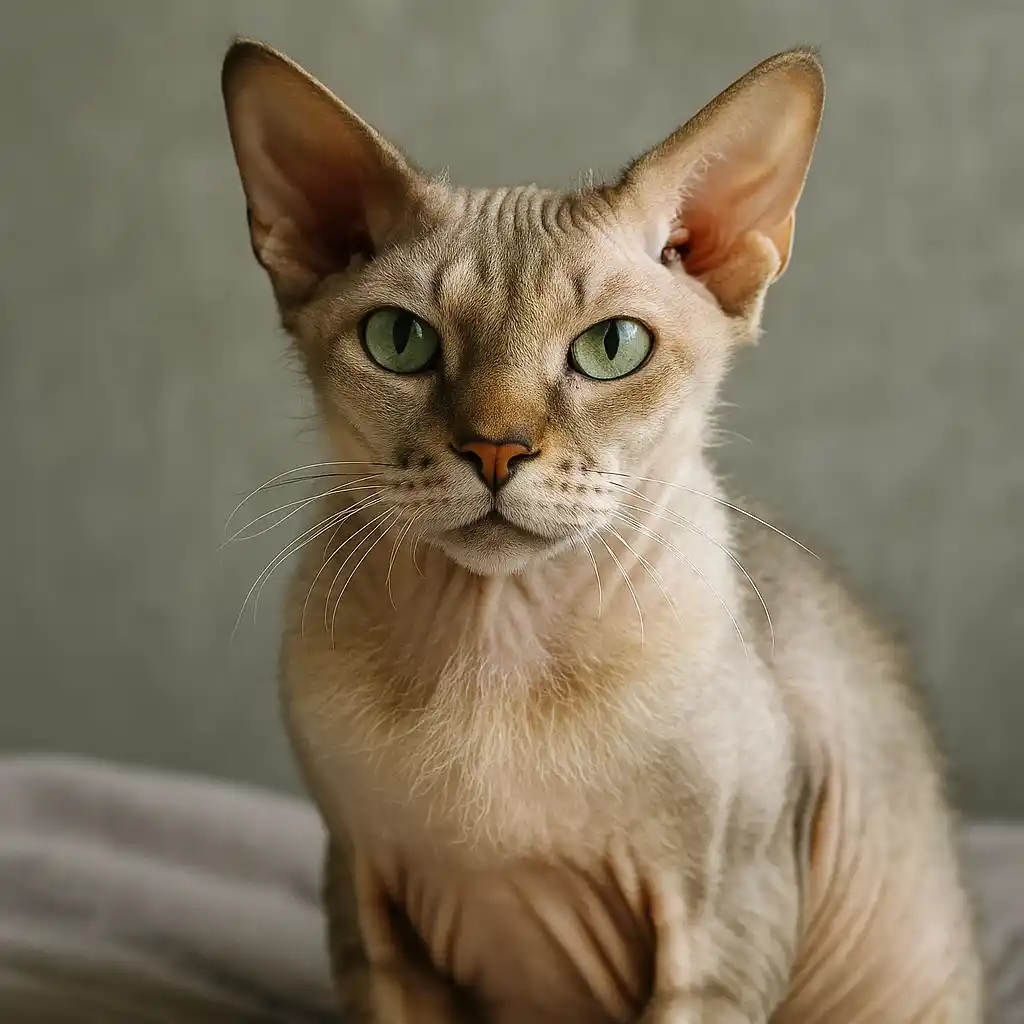When most people picture a cat, they imagine a fluffy coat of fur. But what happens when you encounter a cat with no hair? Breeds like the Sphynx, Donskoy, and Peterbald are known for their nearly hairless appearance, and while they may lack fur, they certainly don’t lack personality or unique needs.
According to the International Cat Association, hairless breeds make up less than 5% of all domestic cats worldwide, yet they are growing in popularity because of their striking look and affectionate nature. But owning one comes with responsibilities that go beyond what’s typical for furry cats. This blog explores their health, grooming, and lifestyle needs so you can give your hairless cat the best possible care.
Why Do Some Cats Have No Hair?
Hairlessness in cats is the result of genetic mutations. The Sphynx, for example, carries a recessive gene that prevents the growth of a full coat. Despite their name, most hairless cats actually have a fine layer of peach-fuzz-like hair that can feel like suede to the touch.
These unique genetics make them hypoallergenic to some extent, but contrary to popular belief, no cat is 100% hypoallergenic. Hairless breeds still produce Fel d 1 protein, the allergen found in cat saliva and skin oils.
Health Considerations for Hairless Cats
Without a fur coat, hairless cats face unique health challenges:
- Temperature Regulation: They get cold easily and may need sweaters or blankets.
- Skin Protection: More prone to sunburn, they should avoid direct sunlight.
- Oil Build-Up: Skin produces oils normally absorbed by fur; without it, buildup can cause acne.
- Metabolism: Studies show that hairless cats burn 25–30% more calories to stay warm, meaning they often eat more than furry cats.
Grooming a Cat With No Hair
Even though they lack fur, grooming is still essential. Regular baths are necessary because their skin collects oil and dirt more quickly. Wiping them down with hypoallergenic pet wipes between baths helps prevent breakouts.
If you’re located in the UAE, professional grooming services such as Pet Grooming Abu Dhabi can provide safe, gentle bathing solutions specifically tailored to hairless cats’ sensitive skin.
Common Grooming Mistakes Owners Make
Hairless cats have delicate skin, so improper grooming can cause irritation or infections. Some of the most common errors are highlighted like Cat Grooming Mistakes, which emphasize the importance of using mild shampoos, avoiding over-bathing, and never neglecting ear cleaning. Owners often overlook that hairless cats produce more earwax and need extra attention in this area.
Specialized Cat Grooming Services
Since hairless cats require consistent care, professional grooming is sometimes the best option. For instance, Cat Grooming Abu Dhabi clinics offer services like nail trimming, ear cleaning, and skin-friendly bathing products. Groomers experienced with hairless breeds can help identify skin irritations or unusual marks early, which is crucial for preventive health.
Diet and Nutrition for Hairless Cats
Because they burn more calories regulating body temperature, hairless cats need a nutrient-rich diet:
- High-protein foods for muscle and energy support
- Omega-3 fatty acids for skin health
- Balanced hydration to prevent kidney and urinary issues
Veterinary nutritionists note that hairless cats often eat more frequently than other breeds, so portion control and scheduled feeding are essential.
Exercise and Enrichment
Hairless cats are energetic, social, and playful. Keeping them active helps prevent obesity and supports digestive health. Provide climbing trees, interactive toys, and safe spaces to explore. Since they seek warmth, expect them to cuddle under blankets or stay close to heated spots.
Clothing and Environmental Needs
- Provide warm clothing in colder climates or air-conditioned homes.
- Use pet-safe sunscreen if limited outdoor exposure is unavoidable.
- Keep soft blankets and cozy resting areas around the house.
Meeting these environmental needs ensures your cat with no hair stays comfortable year-round.
Veterinary Care and Regular Check-Ups
Because of their sensitive skin and metabolism, routine vet visits are important. Regular exams help monitor weight, skin conditions, dental health, and potential genetic issues such as hypertrophic cardiomyopathy, which is more common in Sphynx cats.
Conclusion
Owning a cat with no hair comes with unique joys and responsibilities. From managing temperature and preventing skin problems to providing the right grooming and nutrition, care must be consistent and specialized. Services like Pet Grooming Abu Dhabi and Cat Grooming Abu Dhabi offer expert support, while resources on Cat Grooming Mistakes remind owners of what to avoid.
By meeting their needs and embracing their distinctive traits, you’ll ensure your hairless cat lives a long, happy, and healthy life. These rare companions may look different, but their loving personalities prove that beauty truly comes in all forms—even without fur.

